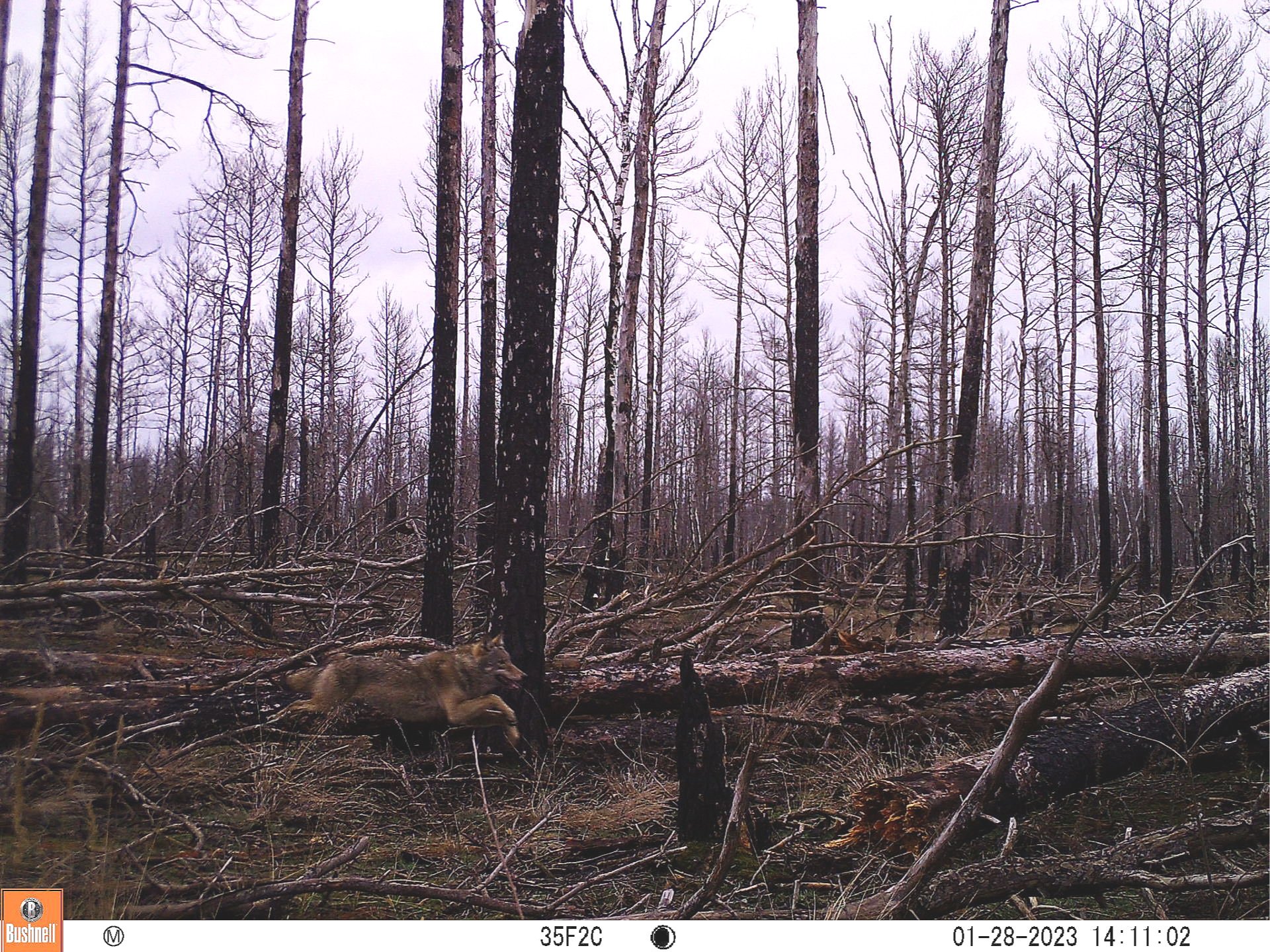
Wildlife and forest fires
The Natural Forest Academy carries out wildlife monitoring on the forest fire areas.
The animals are recorded using wildlife cameras, aerial photography and thermography. Here are the first results:
Aerial surveys and remote sensing
In Jüterbog, a total of 34 animals were registered in 54 detections after completion of the data collection in 2022. With a detection probability of 80 per cent, this corresponds to 4.3 red deer per 100 hectares
No statements can be made in this form for roe deer and wild boar because it is much more difficult to detect and accurately determine the number of animals than for red deer.
Camera traps
Fox and hare were the most common animal species observed so far.
The reference areas in the pine monoculture were unattractive for all species observed.
Ten different mammal species were recorded with the camera traps on the plots in the Jüterbog study area in 2022. This was the highest number of mammal species, followed by the forest in Treuenbrietzen with seven different species. The fewest mammal species, five in total, were recorded in the private forest areas of Treuenbrietzen.
Nine out of ten of the 2022 mammal species photographed in the study areas were predominantly nocturnal. The only exception was the detection of wolves (Canis lupus).
The picture gallery shows wild animals in action:

















